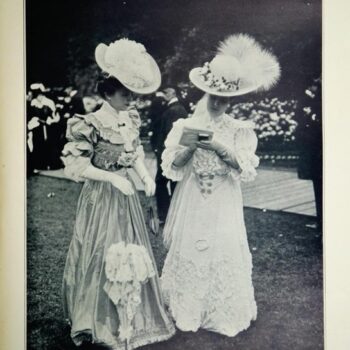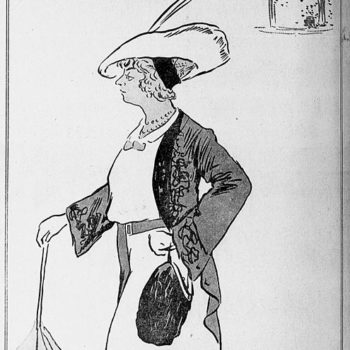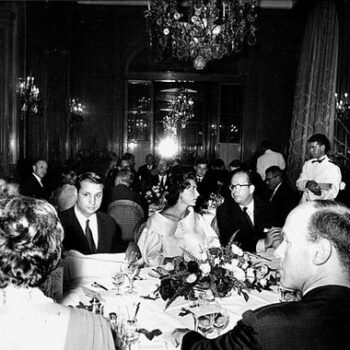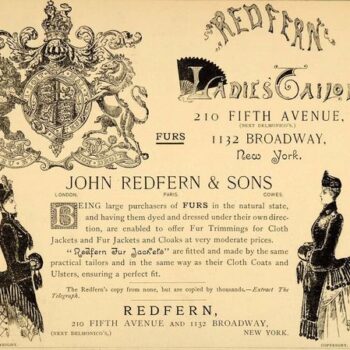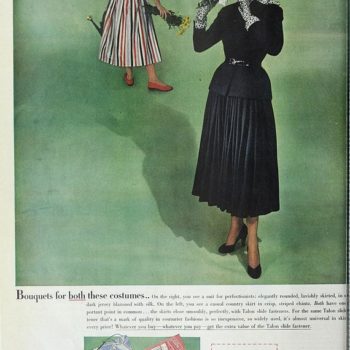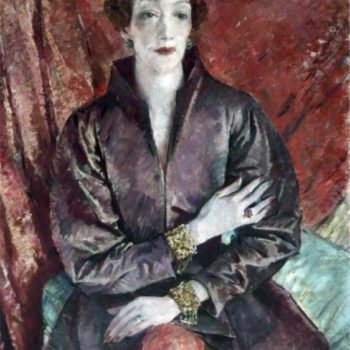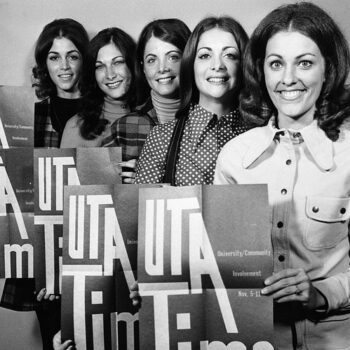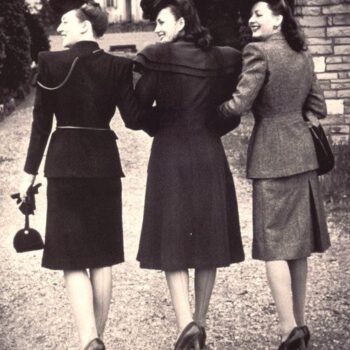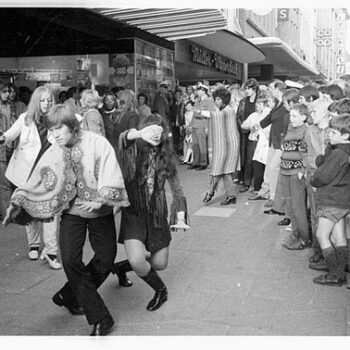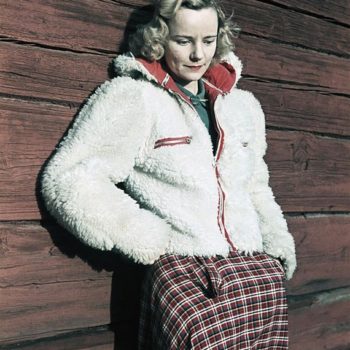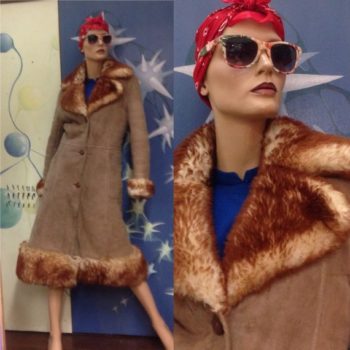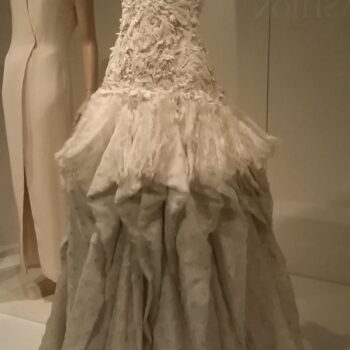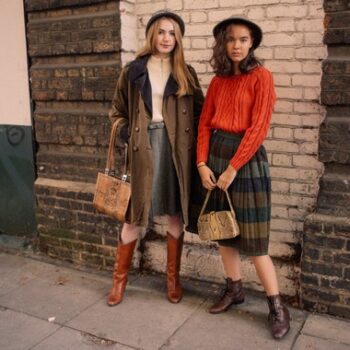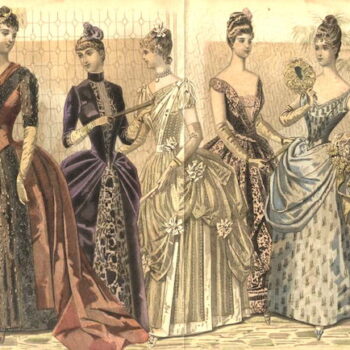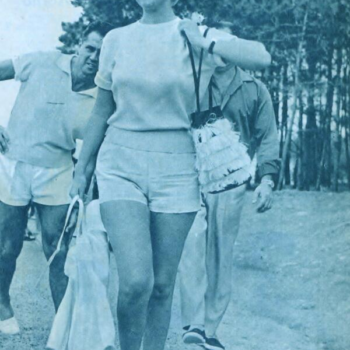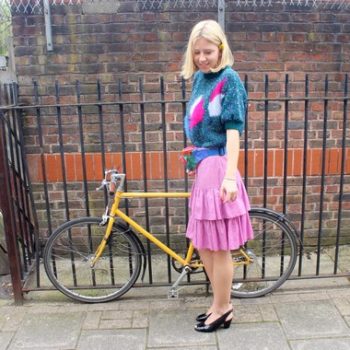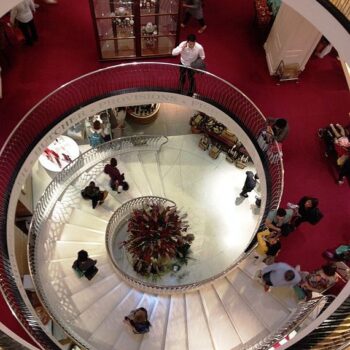1924 Womens Fashion-Callot Souers
July 1, 2016I’m nearly running out of time to mention the Callot Souers in this series, since this top flight fashion house opened its doors in 1895 but was effectively over by 1928, limping on in different forms until 1948. Still, in the Twenties a dress from Callot Souers was, if not the height of 1924 womens fashion, a desirable item.
Callot Souers-Couture outfits for socialites
Callot Souers, although not much heard of today outside the realms of fashion historians, were a very desirable brand who created couture outfits for the American Dollar Princesses, British and European royalty, and any socialite worth mentioning right from its inception at the turn of the 20th century.
It was launched in 1895 by four sisters, Marie Callot Gerber, Marthe Callot Bertrand, Regina Callot Tennyson-Chantrell and Joséphine Callot Crimont under their maiden names of Callot. But in 1897 Joséphine committed suicide.
The sisters were the daughters of a lacemaker mother, who passed on her appreciation of fine fabrics, and an antique dealer father who came from a family of lacemakers and engravers. He was also a painter and design teacher who taught them about antique textiles and how to compose beauty. The eldest sister Marie was formally trained in dressmaking and had worked for the top fashion house Raudniz Souers (also called Raudniz et Cie).
The inception of Callot Soeurs
This was the perfect background for the company the sisters went on to form. Like many other women of the time, they made their own clothes and also enjoyed adding special touches to garments they’d bought, with a special fondness for adding antique lace, ribbons and frou-frou to underwear and blouses. This was so successful and admired amongst their friends that they started to produce the decorated lingerie for others, quickly building a small business out of it. This lead on to them expanding into other garments and soon it was a large business, with 600 employees by 1900, only five years after the launch.
I really love this story because not only is it a family working together, but a family who truly were able to turn their passion into a successful business from the ground up. Lots of times people, in admiring something that I or a friend have made, say “That’s brilliant! You could sell that! You should set up a business.” And lots of people do set up small businesses selling their handicrafts of course, platforms like Etsy making it seem easy. Yet it’s not, and not many of these small businesses break even, let alone prosper. So I have a glow in my heart for the Callot Sisters, and even more because they started in some of my favourite things, silks and satins and ribbons and flounces.
Design influences of Callot Souers
Madame Marie Gerber, the eldest sister who had the fashion training, was Head of Design for Callot Souers. Her design sensibilities continued with the love of decoration they had started with, and embroideries, tassels, and beading were favourite embellishments on silks, satins and velvets. Initially interested in eighteenth-century rococo design.
Gerber played with historical styles in her elaborate tea gowns of 1895 to about 1910, using pretty floral designs on her romantic, tiny waisted dresses with their panniered skirts but when Paul Poiret popularised Orientalism in fashion around 1910 the Callot Soeurs took to the trend like ducks to water, dropping the corset and taking design elements and motifs from Eastern and African garments to lavishly adorn dresses with kimono details, Chinese motif embroidery, tasselled fringes and dangling medallions with a much more streamlined and modern effect.
Moving into the 1920s they kept up with 1924 Womens Fashion trends by creating simple tubular dresses with short skirts in very much what we think of as typical 1920s style in heavy silk with robust colours and bold embroideries. Callot Souers weren’t copycats but genuine innovators, and combined ethnic elements quite wildly – for example, a kimono sleeve might be used with an Algerian burnoose form. In fact, they were in the vanguard with kimonos, already using the distinctive sleeves in the early 1900s.
1924 Womens Fashion – Avant-garde materials
Alongside this classic Twenties flapper look there were more delicate chiffon creations in pastels with floating panels and delicate handkerchief hems. Naturally with this background in all that twinkles, glows and shines they loved gold lamé fabric when it first came out, and were early adopters. They also experimented with avant-garde materials like rubberised gaberdine.
1924 Womens Fashion – Expensive fripperies
The lingerie with which they had become famous, meanwhile, became ever finer and more feminine, made with gossamer silk and panels of gold lace and as lavishly embroidered with bouquets of flowers as their outerwear. The firm were known for the high quality of their workmanship and it isn’t hard to see why Callot Souers was considered by many commentators to be the most expensive couturiers in Paris during their successful years at the height of popularity.
Immortalised in literature
The firm is mentioned in Marcel Proust’s legendary À la Recherche du Temps Perdu (In Search of Lost Time):
“There are very few firms at present, one or two only, Callot – although they go in rather too freely for lace – Doucet, Cheruit, Paquin sometimes. The others are all horrible.”
“Then is there a vast difference between a Callot dress and one from any ordinary shop?”
“Why, an enormous difference, my little man! I beg your pardon! Only, alas! What you get for three hundred francs in an ordinary shop will cost two thousand there. But there can be no comparison: they look the same only to people who know nothing about it.”
Gracious accommodation
Callot Souers had about six hundred employees by 1900, five years after their launch, and by 1914 had expanded enough to move to larger premises, in keeping with their love of opulence receiving clients in a gorgeous suite of rooms decorated in the Chinese style, with Song dynasty silks, gilded Louis XV furniture and Coromandel lacquer.
1924 Womens Fashion – Business minded women
The firm was as passionate about business as about silk and satin, securing places in a number of important international exhibitions: firstly the Paris Exposition Universelle, where it displayed outfits alongside long established Parisian couturiers like Doucet, Paquin, Redfern, Rouff, and Worth, and later at the 1915 Pacific Panama International Exposition in San Francisco, California.
The Californian exhibition was smack in the middle of the First World War when many Parisian houses understandably began to falter, but Callot Souers remained open throughout the war and valiantly attempted to expand their client base.
Callot Souers – Plagued by copyists
They were also heavily involved in Le Syndicat de Défense de la Grande Couture Française (The Union in Defence of Great French Couture), formed in 1914, where they were joined by the big hitters Paul Poiret, Jacques Worth, Jeanne Paquin, Madeleine Cheruit, Paul Rodier, and Bianchini and Ferier.
There was a huge problem with the expensive couture gowns being inexpensively copied, and often these counterfeit gowns weren’t like the “High Street” versions we get today, i.e. noticeably poor quality, rushed and cheap things, but direct hand sewn replicas, sometimes in exactly the same fabrics as the originals, created by skilled dressmakers and bought by the members of society who could afford the real thing, but chose to take a cut price version, indistinguishable from the authentic one.
Copy houses flourished, and they held design books of exquisite sketches of original couture creations all ready to be made to their own client’s measurements or to be sold to ready-to-wear manufacturers without the permission of the gown’s creators.
1924 Womens Fashion – Licensing
Le Syndicat de Défense de la Grande Couture Française innovated ideas like signed and dated labels, sometimes with the thumbprint of the head designer. They also explored ideas of licensing copies for department stores in order to control the market, and various other measures.
Ruling the destiny of a woman’s life
That the sisters were powerful is attested by the proclamation by American Vogue in 1916. Calling them the Three Fates, it declared them “foremost among the powers that rule the destinies of a woman’s life and increase the income of France.”
The rapid expansion of Callot Souers
By the 1920s Calllot Souers could count branches in Nice, Biarritz, Buenos Aires, and London. They were invited to show in the Pavilion of Elegance in Paris’s 1925 Exposition Internationale des Arts Décoratifs et Industriels Modernes next to Jeanne Lanvin, the House of Worth, and Cartier.
The end of the Callot Souers
By the late 20s the sisters were felt to be losing their grip on what was fashionable, and 1928 Madame Gerber’s son Pierre took over the firm, although Madame Gerber remained until retiring in 1937, when the company was absorbed into the house of Calvet. The Callot Soeurs label still existed inside Calvet, until that too closed in 1948.
Callot Souers – The next generation
Just as Marie Gerber had trained under Raudniz Souers, the Callot Souers taught the next generation of couturiers, including the amazing and radical Madeleine Vionnet, who worked there from 1901 to 1907 and became the head of the workroom. Gerber was said to be the first to design by draping her fabric on to live models, a practical method of dress design which involves designing in three dimensions by pinning and cutting fabric on a human, as opposed to making two dimensional models.
But with the highly complex sculptural shapes of Western fashion that had gone before, I simply don’t believe that tailoring had taken place previously without recourse to a human figure. In this case “draping” doesn’t mean that the final design of the gown is draped like a greek toga, just that it is draped over the person before being cut into and pinned into place.
Vionnet
Vionnet is also famous for designing using this technique, (and has also been called the first to do it) but she used a small, child-sized mannequin and she really did use the draping properties of fabric to cut on the bias, which causes the fabric to stretch and flow around the body. Whether or not she invented draping, Gerber certainly used it to innovate and Vionnet developed the idea; I like this idea of the inheritance of ideas and techniques, and the passing along of technical skills (and encouragement?) amongst women in a time when although most seamstresses were women, the heads of fashion firms were men.
1924 Womens Fashion – A great example
Vionnet went on to launch her own House, and later acknowledged her time at Callot to be an absolutely invaluable part of her career, calling Madame Gerber “a great lady totally occupied with a profession that consists of adorning women . . . not constructing a costume.” “Without the example of the Callot Soeurs,” Vionnet said, “I would have continued to make Fords. It is because of them that I have been able to make Rolls-Royces.”






